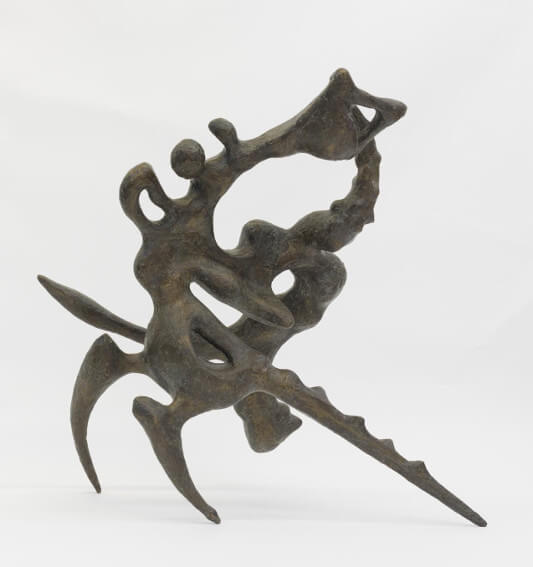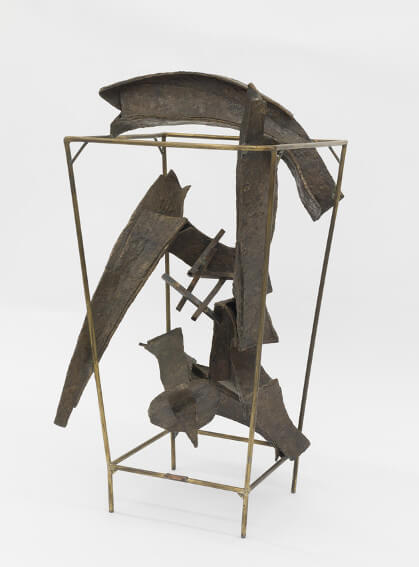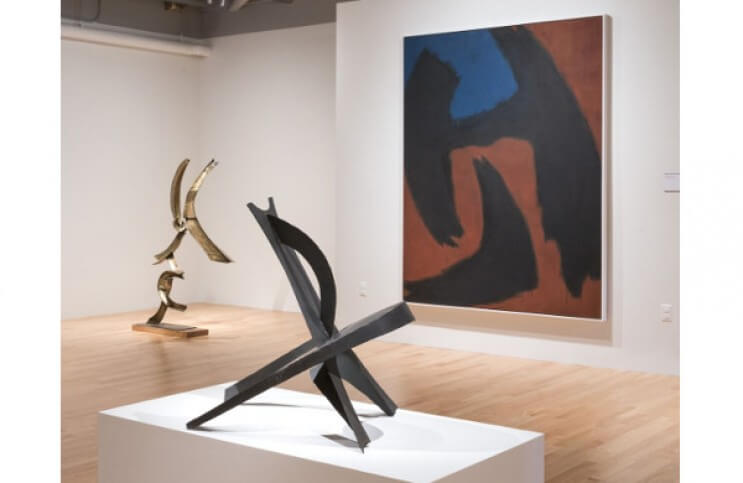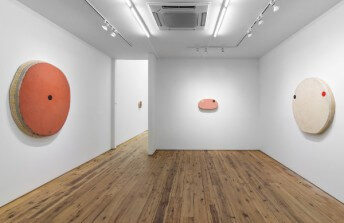Wadsworth Atheneum Museum of Art Honors Abstract Expressionist Sculptor Herbert Ferber
Apr 12, 2018
Herbert Ferber was an enigma. He was one of the most influential artists of the 20th Century, and yet most people today have never heard of him. Ferber hobnobbed with the most famous of the famous—Pollock, Krasner, de Kooning, Motherwell, Rothko. He even showed alongside them at the Betty Parsons Gallery. In fact, Ferber was one of the 18 “Irascibles” who wrote an open letter to The Metropolitan Museum of Art in protest of its American Painting Today exhibition in 1950. He is included in the famous of that notorious group that accompanied the Life Magazine article that is credited with introducing Abstract Expressionism to the world. Despite all of these claims to fame, however, Ferber is not exactly a household name. One reason why could be because that is the way he wanted it. Ferber is extremely challenging to write about because he was very much dedicated to the idea that art should be far more important than artists. He felt that the idea behind the work is what should be discussed, and that the question of how well the idea was realized should be the focus of all art writing. Nonetheless, as valid as this somewhat existential point of view may be, it seems to me vital to talk about the artist to some degree. Without artists and the idiosyncrasies that make them do the things they do, there would be no art to look at or write about at all. Especially in the case of Ferber, the details of his personal life are essential to the ideas he developed. If you are not familiar with his ideas, this is the perfect time to become acquainted. A retrospective exhibition at the Wadsworth Atheneum Museum of Art in Hartford, Connecticut, titledHerbert Ferber: Space in Tension, features 40 works by the artist, spanning his entire career and laying the groundwork for understanding his importance to the development of abstract art.
Build It Up, Break It Down
Born in New York City in 1906, Ferber came to sculpture by way of dental school. He was required to make anatomical studies in class. One of his instructors recognized that he was particularly talented at drawing body parts and recommended Ferber pursue art as a sort of extra-dental hobby. Ferber promptly enrolled in night classes at the Beaux-Arts Institute of Design in New York. Though he did graduate from dental school, and even practiced dentistry part-time, his passion for the ideas he encountered in art school quickly engulfed all of his free time. He began with drawing and painting, but soon felt more attracted to the conceptual realm of sculpture.

Herbert Ferber - Rutgers #6, 1959, © Estate of Herbert Ferber
His first sculptural experiments involved building up layers of plaster to create figurative models of the human figure. Ferber referred to this process of building a sculptural form with layers as a “time-honored” tradition. Yet his curiosity required that he pursue other methods. He was impressed with the way Romanesque architecture created a false sense of scale and perspective. He liked how the empty space within, say, a church, took on as much importance as the physical structure itself. He was inspired by this idea of a framework that collaborates with open space. Building up a sculpture, or even carving out a sculpture, could not achieve that same sense of space, so he decided to work with metal. The welding process allowed him to create what he called “open sculptures,” or forms that were assembled to incorporate both solid materials and empty space.

Herbert Ferber - Apocalyptic Rider II, 1947, © Estate of Herbert Ferber
Gestural Abstract Sculpture
The first major exhibition Ferber was given was at the Betty Parsons Gallery. It included what he referred to as “gestural” sculptures—“naturalistic” forms with “a kind of gestural arrangement.” The work was considered Surreal by some critics, and abstract by others. Ferber said neither description was quite accurate. He was just experimenting with ways of getting at simple ideas. He wanted to make forms that pierced space. He wanted to understand what the difference is between form and space. He wanted to explore how a physical gesture could manifest as a solid object. He wanted to allow his materials and processes to express their truth. These, Ferber pointed out, were the issues that all of the New York School artists were talking about at the time. They were, however, not important issues to the buying public, who largely ignored Ferber, and most of his contemporaries as well, at least in the early days.

Herbert Ferber - Homage to Piranesi IV B, 1963-64, © Estate of Herbert Ferber
Despite being poor and largely ignored, Ferber and the others remained philosophical and idealistic. He recalls talking endlessly with other artists about a single artwork, driving deeper and deeper into its conceptual ramifications. As he said in an interview in 1968 for the Smithsonian Archives of American Art, “we didn't talk the kind of shop that I hear nowadays, which is where you're showing or what you're selling, or what commissions you've gotten. But it was always about the ideas involved in the breaking away from or developing towards a new form or a new idea.” Eventually, those ideas matured into the well-established talking points that now define countless museum exhibitions and essays about mid-20th Century American art. Ferber moved beyond them, though. He kept on evolving and pushing himself in his studio. Every choice he made as an artist allowed him to fulfill an idea, and that remained his primary focus until the end. His aversion to self-aggrandizement may have kept him under the radar of the mass media since he always gave credit to the ideas and not his name, but it also endowed his work with authenticity, vitality, and power. Herbert Ferber: Space in Tension runs through 29 July 2018 at the Wadsworth Atheneum Museum of Art.
Featured image: Herbert Ferber: Space in Tension, installation view at the Wadsworth Atheneum Museum of Art, © Wadsworth Atheneum Museum of Art
All images used for illustrative purposes only
By Phillip Barcio


